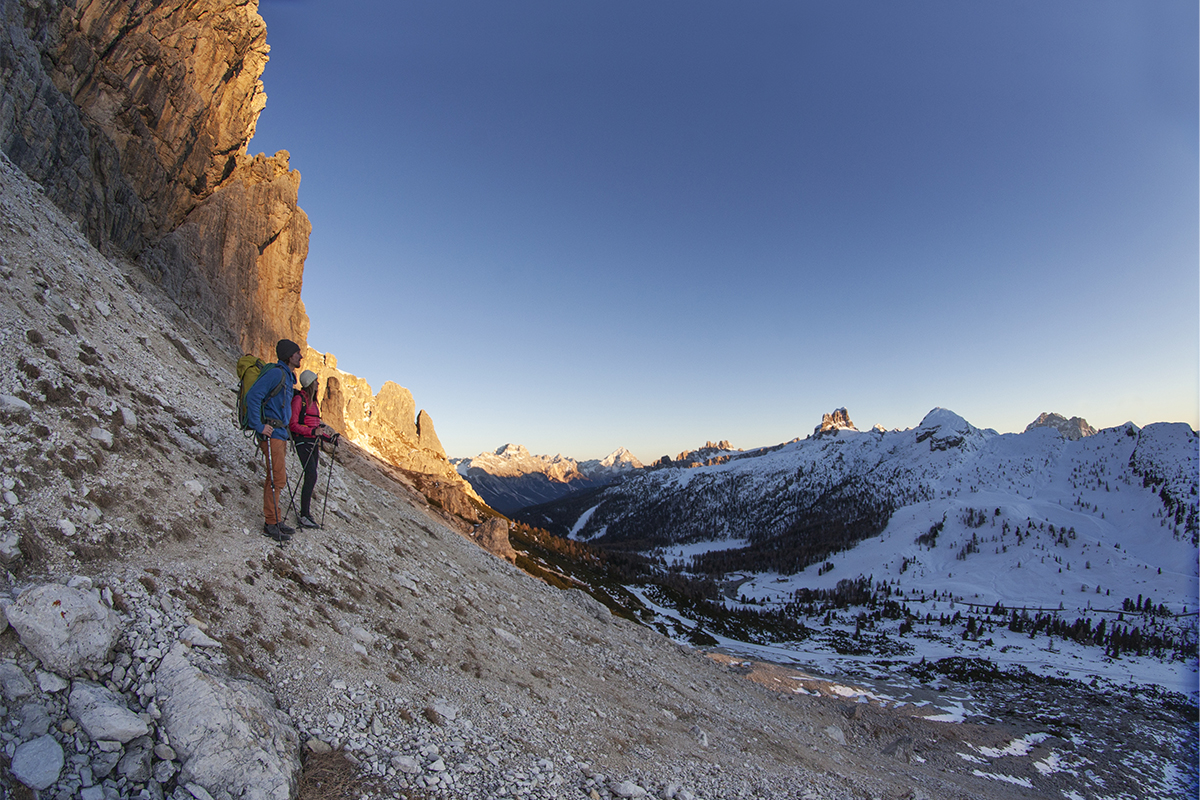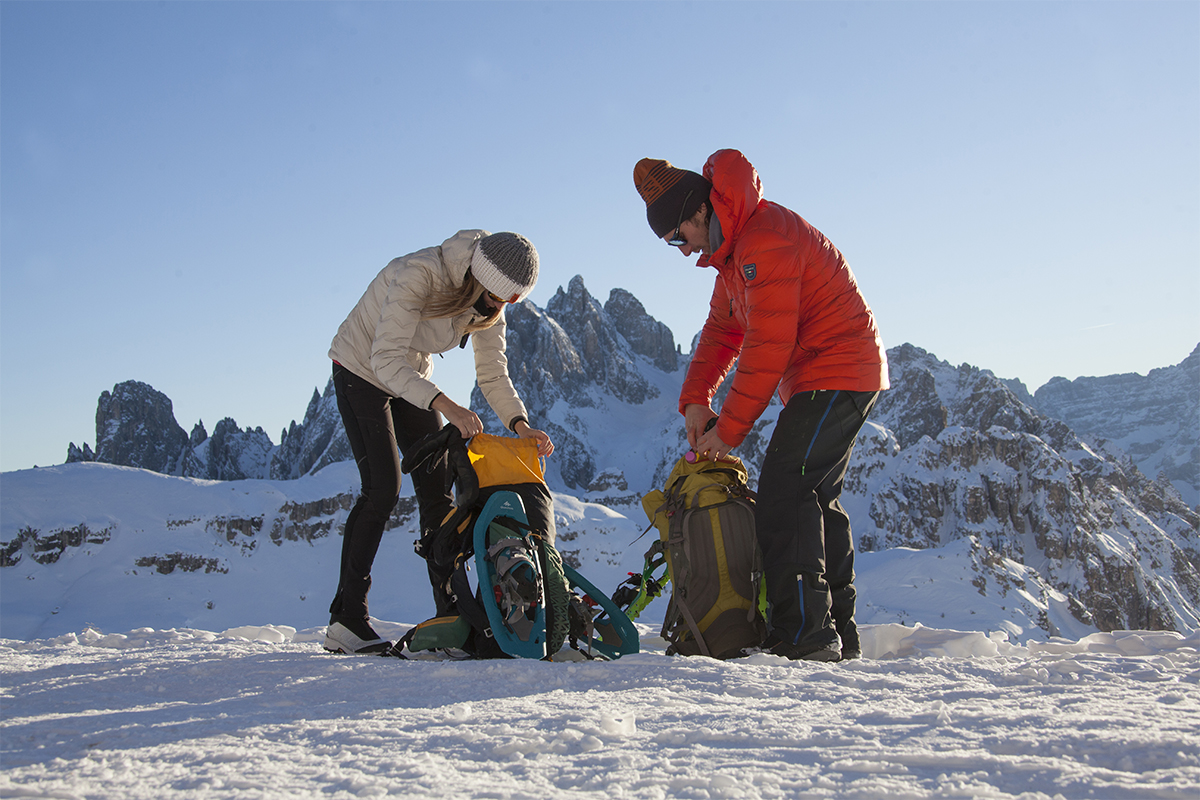Winter trekking: tips and advice
Winter trekking: tips and advice
With the first snowfalls, when the forests and all of nature go into their usual winter stand-by, the mountains take on an almost mystical feel. The incredible sense of magic surrounding you as you walk through a forest in winter is an experience to be enjoyed and savoured to the full, and one that will show you that you can still take advantage of a crisp winter’s day to go trekking. Let’s take a look at some tips on how best to approach winter trekking and hiking, a wonderful experience that nonetheless needs thorough and careful consideration. One good thing about winter is the stability of the weather – but while changes in conditions tend to be less abrupt, there are still several crucial aspects to consider. One key aspect that absolutely needs to be taken into account is that the days are much shorter. When the sun goes down on a winter’s day, temperatures plummet; already by the afternoon the sun will begin to weaken and many of the slopes, going into shade so early, will start to freeze. This is why it is vital to make sure you have not just the right clothing, but also the right equipment, as well as being thorough in your planning, of course.

Dressing correctly
When it comes to clothing, we are not just talking about the quality of the garments as mentioned previously, but also about how to wear them. One of the most common mistakes when preparing for a winter excursion is to wear too much. Knowing what to wear is not always as straightforward as it might seem, so while the golden rule is always to dress in layers, let’s take a closer look at what those layers should be. The outer layer is known as the hard-shell: this is a lightweight windproof and waterproof jacket that protects the body from the harsher elements such as wind and rain. Underneath this, depending on conditions, you can add a lightweight down jacket or a soft-shell jacket. The purpose of this layer is to keep the upper body warm, and it is usually used to keep from getting cold when resting or when making camp; during the activity itself it is usually stored in the backpack to avoid pointless excess sweating which would only lower the body’s temperature even further.

Next is a mid-layer of fleece. This is a relatively lightweight yet still warm technical sweatshirt: another key layer which should be comfortable enough to ensure breathability and freedom of movement. Now we come to the final layer: underwear. This should also be breathable, and it is essential that any heat and moisture produced by the body is allowed to escape to avoid any dampness or moisture forming on the skin. The final word on clothing concerns trousers: the main feature of a good winter trouser is its water resistance. This key factor allows you to keep dry and retain body heat even when walking in snow, whether it is heavy or light.

Accessories and equipment
In addition to clothing, it’s a good idea to take a look at equipment too: whether for walking, such as hiking boots and snowshoes, or for safety, such as DVA, shovel and probe. All of these are absolute essentials when tackling excursions in conditions of heavy snowfall, where you are likely to come across tricky spots like steep, icy sections much more frequently.

Your boots should of course be waterproof and resistant, while snowshoes can be chosen according to preference based on the available budget, while also taking into account the type of excursion you will be undertaking. Having all this gear naturally requires the ability to use it, which makes it a good idea to attend one of the many courses frequently held during the winter by numerous mountain guides.
Author: Davide Canil (Kalipè Trekking)



